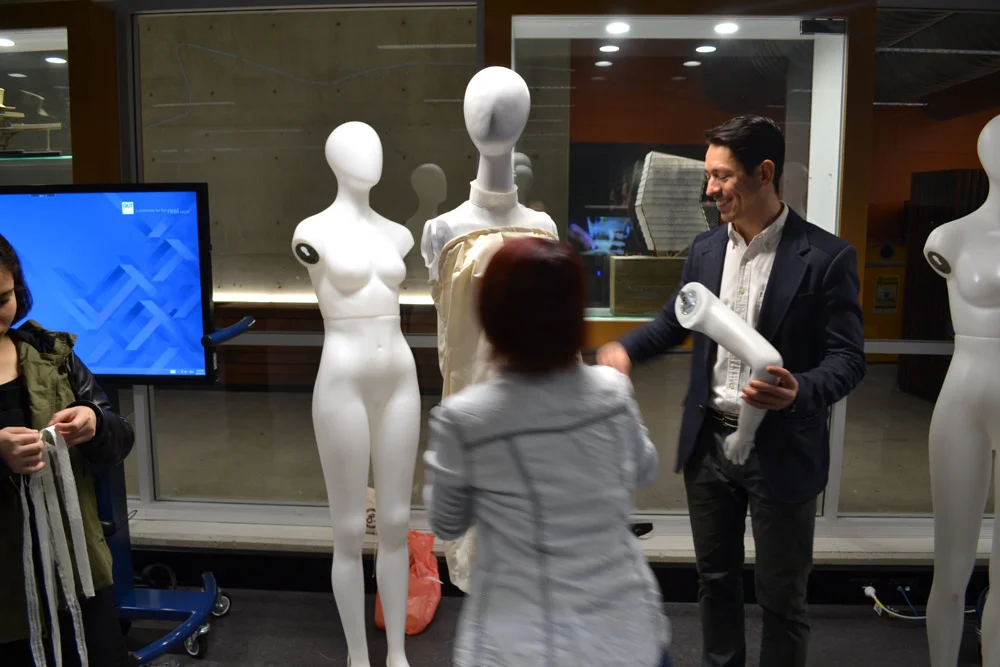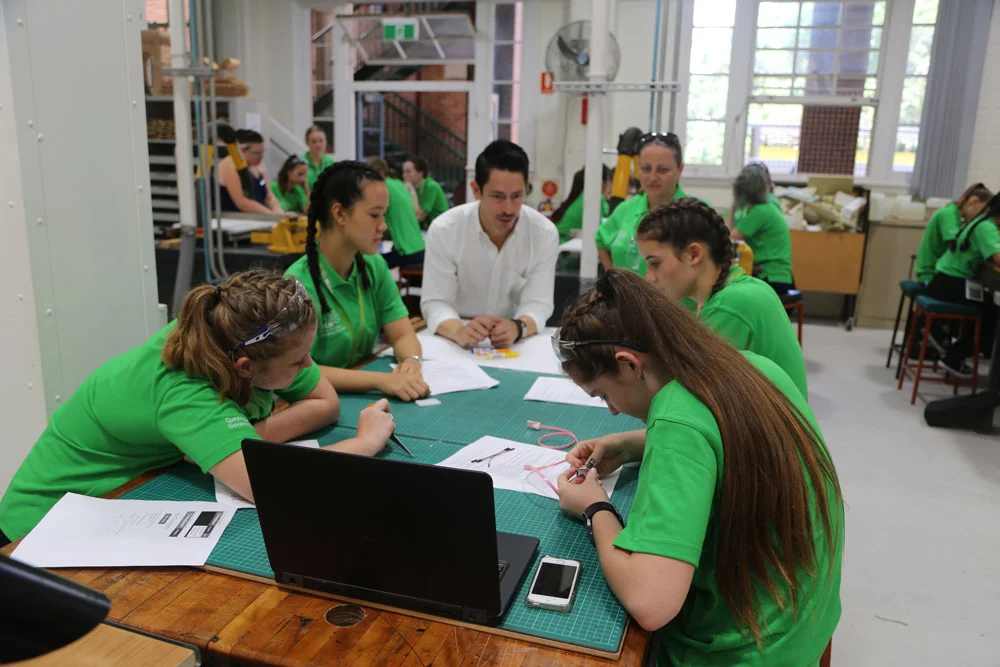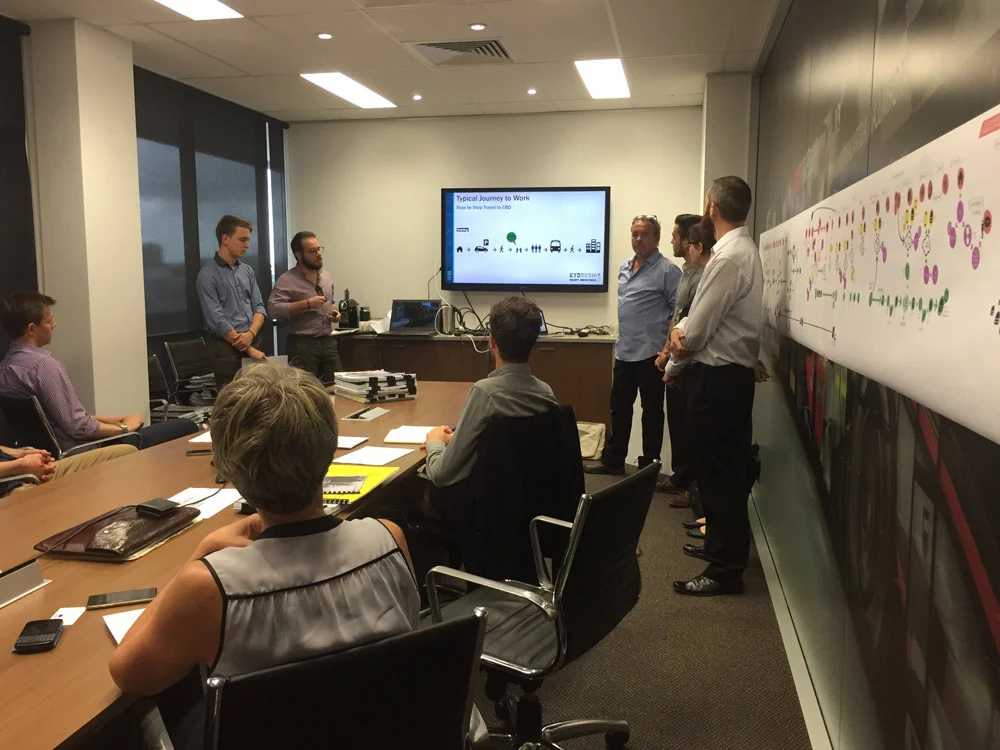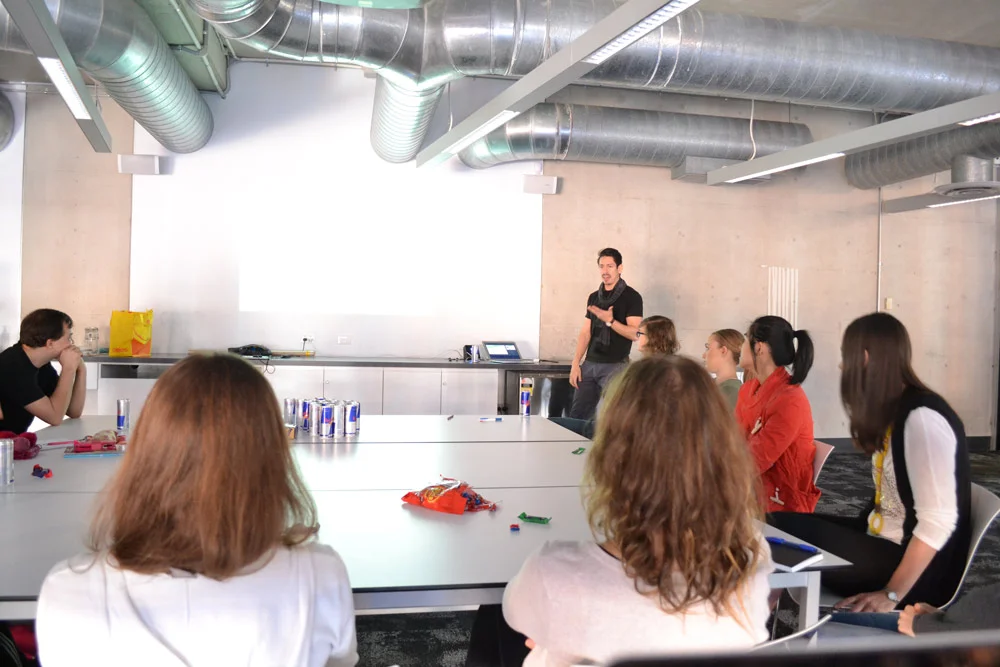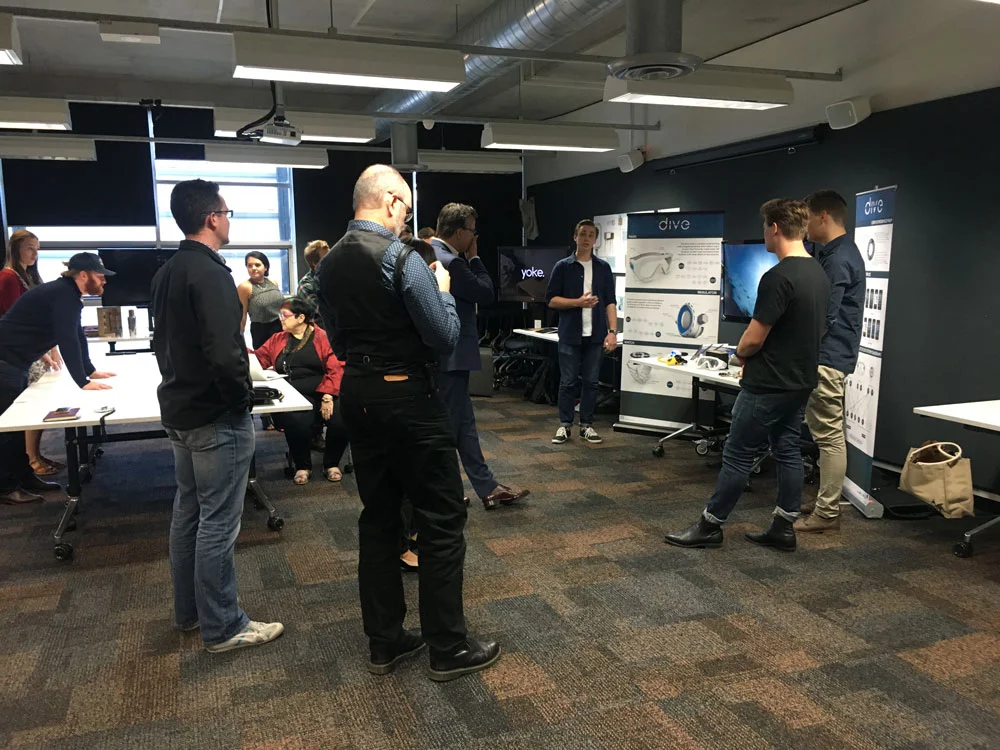Dr Rafael Gomez On Systems Thinking, Design & Education To Tackle Complex Problems
Dr Rafael Gomez is a Lecturer in Industrial Design at Queensland University of Technology and has built his career both as an academic and a practicing designer. He holds a PhD in design, with an expertise in emotional experience, and is a prominent researcher in the field nationally and internationally.
He has developed frameworks, used by world-leading companies such as BMW, to better understand peoples' evolving emotional experience with devices, interfaces, services and systems. In addition, Rafael has over 15 years industry experience as a designer for small, medium and large enterprises in aviation, construction, medical, government and consumer electronics industries. He is design director for Propaganda Mill, a multidisciplinary design company working across product design, branding, graphics, high-end visualisation and projection graphics. Rafael is a member of the People and Systems Lab at co-leader of the Design Fabrication Platform for QUT Design Lab . He is a member of the Design and Emotion Society and sits on the committee for the Design Institute of Australia Queensland Chapter.
Rafael discusses how design and systems thinking can be used as a weapon to solve problems, shares his perspectives on tertiary design education and discusses design and policy.
Highlights from the interview (listen to full details on the podcast)
[Rachel Stevens] - Could you please share a bit about your background in design and academia? [2:00]
[Rafael Gomez] - I’ve been very conscious about building my career and balancing both industry experience as well as my academic experience. For me I’ve been involved within industry in in-house consultancy through to traditional design consulting and now running my own business. Within academia I’ve progressed from my undergraduate degree through to Masters and PHD and now teach at QUT at the same time as doing design industry. For me that’s a really important thing from a personal perspective because it keeps me energised for both of the things that I do in my careers from industry as well as my academic side. I feel like both inspire and give to each other. My industry experience allows me to then relate to what I do in my teaching and to talk to students about that and my academic side of things also impacts the way that I go about doing what I do in industry. I think for me that’s a really powerful and important thing.
As the coordinator of second year industrial design cohort at QUT what type of projects are your students engaging in that are helping to tackle complex issues? [3:25]
I give my students two projects across the two semesters. The first semester is really about establishing a new way of applying the skills that they learn the first year because they’re just coming in from that first year of skills development and establishing those initial basic skills. So the first project really gets them thinking a little bit more broadly about ways design can impact the world.
It’s not just about products and not just about designing products, yes it involves that, but it’s about why are we designing products, why do we do the things that we do in this world? That’s the more important question.
That’s the project we kind of work with in the first semester. The topic at the moment is around homelessness but we’ve had different topics before around emergency shelter, response to floods that we had here in Brisbane so they have that firsthand experience. The topic is what sets the scene for them to think, 'wow yeah design is not just about designing products', yes there is products within that but it’s not just about them, that’s not the reason we’re doing this.
It’s about some sort of bigger problem or issue that exists in the world. So its starts reshaping their thinking around their impact in design in the world in that way.
So that’s the first step in the second year. Then the second semester we look at a little bit more complex issues. This is around complex systems and application of design into that system. At the moment the project is around transportation but we could just as easily be looking at things such as health care, food security, environmental sustainability issues. All of that is around dealing with a large complex problem and again there is products within that but how do we manage and deal with thinking like a designer around complex problems.
In recent years we’ve seen an increase in awareness around social entrepreneurship and design as an effective tool to create change. What do you believe tertiary educators can be doing to best prepare their students as change makers and social innovators? [5:37]
I think teaching students to design more stuff won’t solve that problem.
Yes, designers and industrial designers specifically need to learn that skill set of designing objects and products but we also need to think about how to teach them to design services and respond to systems better. That for me is the key.
It’s a very challenging problem from an education perspective because industry has not necessarily shifted yet in that sense. Students are going into industry, they need work and they need to be involved in the economy but we also need to put those seeds of change in them because the change is going to happen and it's going to happen quickly.
Without teaching young designers of today more than just product-centric skills, and more than just aspiring to design beautiful, effective products – then you are doing a disservice to those students, and to the future of this discipline.
As much as we can, students need to have the knowledge on how to respond to some of these events that are going to happen in the world, economy, discipline and the application at that larger level. A few of the things we can prepare them for is to help young designers to want to be lifelong learners. As educators we don’t have all the answers yet either, we’re not always facing the same problem directly, and this is why our students need to be lifelong learners. When those challenges come along they will need to want to learn, and develop themselves as they grow. The other thing is to talk to students about being inquisitive and to challenge the norms. Now they do need to learn the rules first to do that, but they need to then be able to push their own boundaries as designers and also that of their discipline and industry. That’s a difficult challenge and a difficult thing to do. Something that I think needs to be part of what we do as educators and to encapsulate that is to help them to become design leaders.
Is there any other advice you would give to students from creative industries who are passionate about using their future career to create that positive social change in order to become those design leaders? [8:03]
I’d like to reiterate and expand on those earlier points a bit. One is to never stop learning. Lifelong learning to me is really key especially with the world and significant challenges we are faced with in the 21st century.
You never stop learning in your life, it really is a journey.
You keep going and are always progressively learning. Through that I think students will become better designers and this is something that applies at any point in life.
The other thing is to learn the rules and then learn how to break them. It’s not just about breaking them for the sake of breaking them either. It’s about learning how to break them because that’s how you push a discipline and a field forward.
Is there any other advice you would give to students from creative industries who are passionate about using their future career to create that positive social change in order to become those design leaders? [8:03 - continued]
My third point is follow passion.
Find something that you're passionate about and that you like as a designer.
Without that I think it’s really hard to have the drive and the energy to do all the other things that I’ve just mentioned. Having a passion in design and in how and what impact you want to make in the world is a really important part of that.
To expand on that I think Industrial Design needs to evolve from a product-centric to a systems-centric approach. That involves us from an educational perspective to teach student that it is necessary in this current world but also for the future challenges that we’re faced with. Challenges around poverty, around inequality, around sustainability, all of these complex systems have a lot of solutions around not just designing a new product but other solutions that are smart, agile, effective and low resource intensive. They could just be interventions or the reuse of existing resources to design that but if all you're focusing on as an industrial designer is making products in that traditional sense of the industry then that will be your solution. That’s a really small local problem that you’re responding to.
If you understand a system then you can respond much more broadly and you can tackle these areas of social innovation, social inequality and sustainability.
Like I said the solution may involve a product but it may not and I think that’s when we can have much greater impact as designers. I think if we focus on just a product solution we will become irrelevant as a discipline.
That’s a really big worry.
To become relevant and to become impactful in the world we need to start thinking about things from a systems level perspective.
That comes back to your question around how does education impact that. I think those things need to be driven by the current designers and generation that’s going out into the world now.
Are you involved in any research or industry projects which are applying design or systems thinking to positivity benefit society? [12:06]
At the moment yes, there is a few I’ll discuss but I’d love to be involved in many more. On the one hand the academic side allows me to give back and positively impact society through my education and the projects that we get students to do. Getting them to remap the way that they think about design and the impact they can have in society through projects around homelessness, emergency shelters and around complex systems thinking for me is the impact that I give back.
Within my research side of things there are a number of projects I am working with around health and wellbeing. Looking at my expertise around emotional experience and applying that to the design of wearable products or systems within this area. One such research is a design for Parkinson’s disease to improve the health and wellbeing of patients who suffer from the condition, as well as to be able to provide more important feedback to health professionals that then allows them to respond more positively to the problems and issues that Parkinsons patients experience in their lives.
I guess we’ve touched on it already but rather than creating artefacts and objects how do you see design as a method and as a research approach capable of tackling societies key issues? [14:00]
I think it’s really an extension of what I was talking about before. If we don’t somehow escape this idea that our role as an industrial designer is to just design products, then we do risk becoming irrelevant and that is a significant issue as a discipline.
Design is an incredible weapon that can be wielded to solve all sorts of problems, mundane through to significant.
My role and the things that I try and inspire students to think about is that design is a tool that can be applied to solve those kinds of significant issues that we are dealing with and will continue to deal with.
My concern at the moment is that designers aren’t involved at that high level discussion in the world.
There are a couple of examples but there are very few examples where designers are actually engaged at the policy level, at the political level, and at these kinds of levels in terms of impacting the ways that we can respond to issues in a designerly kind of way. There are lots of other people and disciplines and thinkers in that space but rarely is there a designer involved. That’s something I think we need to shift towards so that further down the line we aren’t just responding to ‘oh just solve this problem with a design or a product’ because by then the brief and the criteria is set and I think we need designers helping to set some of those guidelines and trajectories. So I think that’s how design is capable of tackling some of the issues; if we start to shift, little by little, towards getting involved at that systems levels of thinking and then being able to design for those problems.
You mentioned that there were some people in that space, are there any inspiring projects are initiatives either locally or internationally that you do think are creating that positive social change? [16:10]
There really are very few that talk about systems thinking.
I do think there is some massive growth in the social innovation space which is fantastic to see. But at the same time combining the systems thinking approach together with social innovation will be the most powerful response.
There is a company in Finland called Sitra that are engaged at the systems thinking approach. The first problem that this company was given was to redesign the education systems in Finland. That year, Finland was ranked number 1 for education in the world. Their problem was redesign the education systems so that they stay number one. That’s a real problem and that’s a real issue that needs to be considered from a design perfective. So Sitra work with not just designers but with all sorts of disciplines and fields in a very cross and multi-disciplinary aspect which is really important as part of that. There are designers within that who start to impact policy, impact changes and when posed with a question like this a product is rarely the only solution. There may be products within that but there is much more than that. So Sitra is a good example of engaging at that kind of level.
I think that there is a lot of social innovation companies and non-for-profit organisations. Design That Matters is one that comes to mind. They do a whole lot of work around social innovation. Patagonia is a good company that I always think of as a great example something that has an economic benefit but also very socially aware in what they do, very sustainable in terms of their practises. Project H, is another non-for-profit organisation that are trying to bring design thinking to solving problems that are positively impacting the world.
To finish off were there are great design or social impact books that you could recommend to our listeners? [18:32]
[Rafael talks in detail about the books listed below.]
Initiatives, people and resources mentioned on the podcast
Recommended books
Design for Sustainable Change by Anne Chick and Paul Micklethwaite
Design Revolution by Emily Pilloton
Designing for People by Henry Dreyfuss
Thinking in Systems: A Primer by Donella H. Meadows


